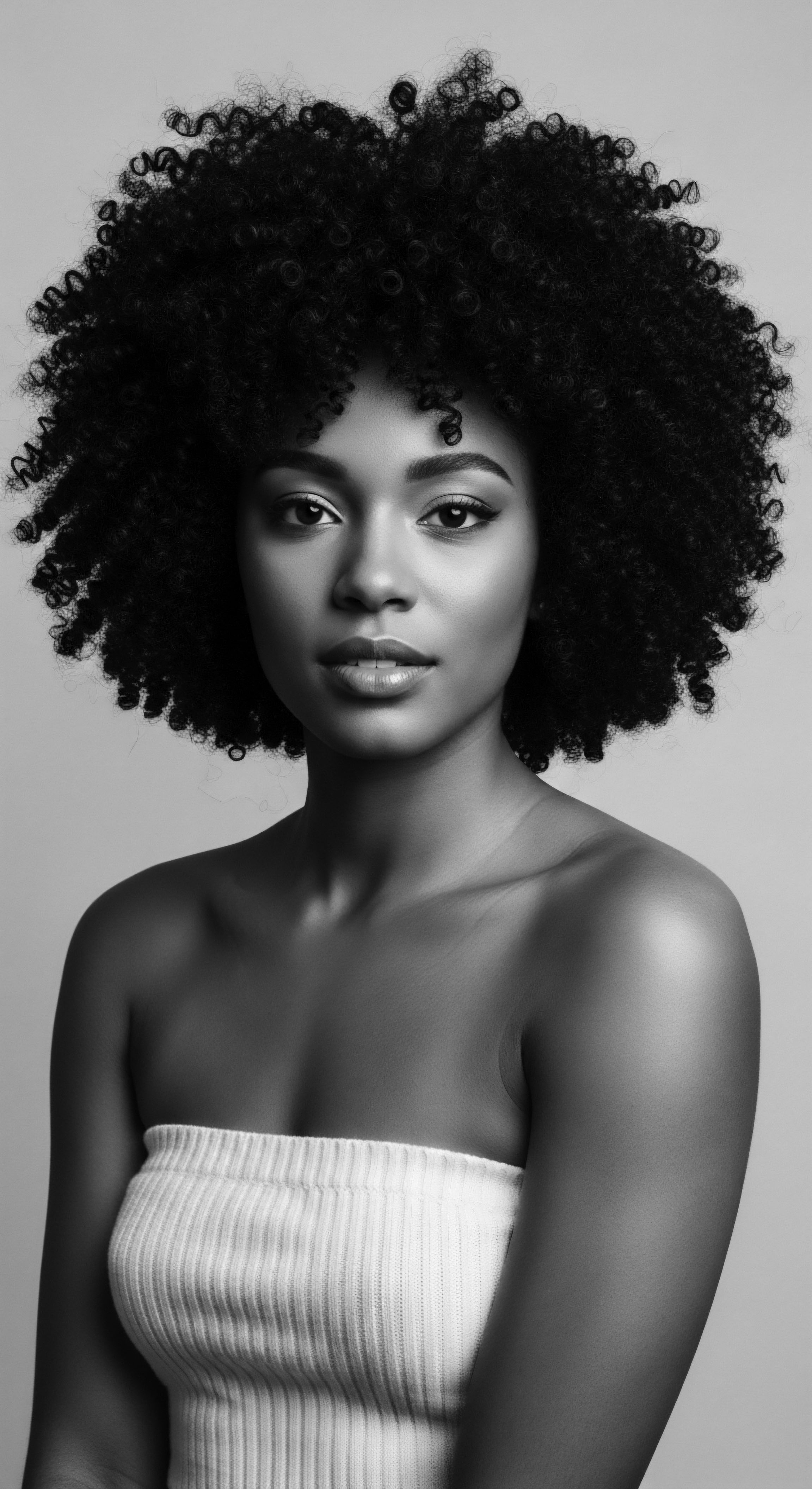
Roots
The stories whispered through time, carried on the very wind that rustled ancient leaves, often speak of wisdom held in the natural world. For those of us connected to textured hair, our coils and kinks hold genealogies of care, resilience, and beauty. This deep heritage beckons a particular question ❉ Can ancient botanical knowledge truly validate the revelations of modern textured hair science?
It is a question that invites us to listen closely to the echoes from the source, to understand how wisdom passed down through generations can illuminate the precise mechanisms now described in laboratories. This journey is not about proving one superior to the other; it is about recognizing the enduring validity of ancestral practices, seeing them not as quaint historical footnotes, but as profound, intuitive sciences that laid the groundwork for today’s understanding.

Tracing the Strand’s Ancestry
The architecture of textured hair, with its unique elliptical shape and varied curl patterns, often demands specific care. Across Black and mixed-race communities, practices honed over centuries developed a deep intuition for this distinct structure. Our ancestors, acutely attuned to their environments, discovered botanicals that addressed the specific needs of these coils long before scanning electron microscopes revealed cuticular scales or protein matrices. They understood, through observation and inherited knowledge, what kept hair strong, supple, and vibrant.
Consider the anatomy of a single strand. Each helix, whether a soft wave or a tight coil, possesses a cuticle, cortex, and medulla. The cuticle, a protective outer layer, is especially vulnerable in tightly coiled hair due to its naturally raised scales. This characteristic makes moisture retention a perennial concern.
Ancient knowledge addressed this challenge with a wealth of plant-based emollients and humectants. Modern science, with its biochemical analyses, now explains the molecular components within those plants that provide precisely these benefits. The journey from observing a plant’s effect to understanding its molecular action completes a circle, reinforcing the profound ancestral insight.
Ancient botanical practices, born from intimate observation, provided intuitive solutions for textured hair, predating and now often paralleling modern scientific explanations of hair structure and needs.

Botanical Wisdom in Antiquity
Across various African and diasporic cultures, plants were central to hair health. The use of certain herbs and oils was not accidental; it stemmed from a deep, communal knowledge base. For instance, the traditional application of Shea Butter (from the Vitellaria paradoxa tree) in West Africa for moisturizing skin and hair has roots stretching back thousands of years.
Early Egyptians also used various plant-based ingredients for hair care, including castor oil, honey, and fenugreek. These ingredients were selected for their perceived ability to promote shine and growth or to protect against environmental stressors.
The classification of textured hair types today, though often debated and sometimes critiqued for its limitations, attempts to categorize curl patterns and density. Ancestral practices, while lacking a formal numeric system, implicitly recognized this diversity. They understood that a tightly coiled hair might respond differently to a treatment than a looser wave.
This recognition guided the selection of specific plants and preparation methods, creating a bespoke approach to hair care long before such terms entered common parlance. The lexicon of textured hair, too, holds whispers of this heritage, with terms that describe not only physical attributes but also the practices and spiritual significance intertwined with hair.
| Botanical Name (Common Use) Vitellaria paradoxa (Shea Butter) |
| Traditional Application Moisturizer, protective sealant, emollient for hair and scalp. |
| Modern Scientific Validation Rich in fatty acids (oleic, stearic, linoleic) and triterpene cinnamates; provides moisture, reduces inflammation, and offers some UV protection. |
| Botanical Name (Common Use) Trigonella foenum-graecum (Fenugreek) |
| Traditional Application Promotes hair growth, strengthens strands, reduces dandruff. Used in various hair tonics and masks. |
| Modern Scientific Validation Contains proteins, nicotinic acid, flavonoids, and saponins that strengthen follicles, improve scalp circulation, and possess anti-inflammatory properties. |
| Botanical Name (Common Use) Hibiscus rosa-sinensis (Hibiscus) |
| Traditional Application Stimulates growth, conditions, prevents hair loss, adds shine. |
| Modern Scientific Validation Rich in vitamins (A, C, E), amino acids, and antioxidants; stimulates blood circulation to the scalp, strengthens follicles, and acts as a natural astringent. |
| Botanical Name (Common Use) This table highlights how traditional botanical uses for textured hair find contemporary resonance in scientific understanding of their active compounds and mechanisms. |

Are Hair Growth Cycles Universal?
Hair growth cycles—anagen (growth), catagen (transition), and telogen (resting)—are biological universals. However, factors like nutrition, environment, and stress can influence these cycles. Ancestral communities lived in close relationship with their environment, consuming diets rich in plant-based nutrients that supported overall health, including hair. This holistic understanding of wellness meant that hair care was not isolated but integrated into broader lifestyle choices.
The plant extracts they used for topical application often provided direct nourishment to the scalp and follicles, promoting optimal conditions for the anagen phase. A study on African plants for hair treatment, for example, identified 68 species used for conditions like alopecia and dandruff, with 30 of these having research linked to hair growth and general care, focusing on mechanisms like 5α-reductase inhibition. This suggests a long history of botanical intervention aligned with modern understanding of hair biology.
The foundational understanding of textured hair, its nuances, and its vulnerabilities, comes alive when we consider it through the eyes of those who tended it with indigenous plants for millennia. This is the heritage that frames our current scientific queries.

Ritual
Hair care, for many, transcends mere cosmetic routine; it is a ritual, a sacred practice steeped in community, identity, and generational wisdom. This truth holds particularly deep for individuals with textured hair, where styling often involves not only artistry but also the preservation of history. The very act of caring for one’s coils can become a tender thread connecting present to past.
Can ancient botanical knowledge, then, genuinely inform the art and science of modern textured hair styling, shaping our techniques and tools? Indeed, the continuity is striking, revealing how timeless wisdom remains relevant in our contemporary world.

Echoes of Protective Styling
Protective styles, such as braids, twists, and cornrows, are cornerstones of textured hair care, safeguarding strands from manipulation and environmental stressors. These styles are not modern inventions; their origins span continents and millennia, visible in ancient Egyptian drawings dating back to 2050 B.C. The intricate braiding patterns seen in pre-colonial Africa were more than decorative; they conveyed social status, marital status, age, ethnic identity, and spiritual messages. The care rituals accompanying these styles were equally deliberate, involving emollients and sealants to prepare and maintain the hair.
Ancient botanicals played a vital role in these protective practices. Before braiding, oils from plants like Castor Bean (Ricinus communis) were routinely applied. These preparations were not simply for lubrication; they formed a protective barrier, reducing friction and moisture loss, preserving the integrity of the hair shaft during styling and over time.
Modern science validates castor oil’s composition, rich in ricinoleic acid, which is known for its moisturizing properties and ability to boost scalp circulation. The deep conditioning imparted by these botanical mixtures meant that even complex, long-lasting protective styles could be maintained with minimal damage.
Styling textured hair extends beyond aesthetics, functioning as a cultural ritual where ancient botanical knowledge provided essential protective and conditioning elements.

Natural Styling, Ancient Wisdom
Beyond protective styles, defining and enhancing natural texture has always been a pursuit. The desire for lustrous, well-formed curls is not new. Our forebears used botanical mucilages and gels to impart definition and hold without the harsh chemicals common in more recent history. Consider the traditional uses of Aloe Vera (Aloe barbadensis miller).
Across ancient Greece, Rome, and various parts of Africa, aloe was prized for its soothing and moisturizing properties. Applied as a gel, it offered a gentle hold, smoothing the hair cuticle and lending a natural sheen, particularly beneficial for curls. Modern research confirms aloe vera’s composition, rich in vitamins (A, C, E, B12), minerals (zinc, magnesium), amino acids, and proteolytic enzymes, all contributing to scalp health, moisture retention, and strand strength. The consistency of aloe gel, derived from its polysaccharides, provides a natural styling aid, much like modern curl creams that use plant-derived polymers.
The application of ancient knowledge to contemporary natural styling is evident in the resurgence of DIY hair care. People are rediscovering the efficacy of kitchen ingredients—flaxseed gels, okra mucilage, and rice water—all rooted in a botanical understanding that mirrors ancient practices. These methods respect the hair’s natural form, offering definition and moisture without weighing down fragile textured strands. This approach contrasts sharply with the historical imposition of chemical straightening, a relic of colonial beauty standards, and instead reclaims a styling heritage centered on natural hair’s inherent beauty.

Tools and Transformations
The tools of textured hair care have also evolved, yet their ancestral counterparts laid the foundation. Early combs, often crafted from wood or bone, were designed to navigate coils without snagging. The painstaking process of detangling, a necessary precursor to styling, was softened by the application of rich botanical oils and conditioners. Modern detangling tools, with their flexible bristles and wide-set teeth, are refinements of these ancient implements, working in concert with nourishing products to minimize breakage.
- Wooden Combs ❉ Ancestral combs, often made from natural materials, were designed to gently separate textured hair, reducing damage. Their smooth, non-static surfaces still offer a gentler alternative to some synthetic combs, respecting the hair’s natural integrity.
- Scalp Massagers ❉ Finger-based scalp massage during botanical oil application has been a long-standing practice to stimulate circulation. Modern silicone massagers replicate this action, aiming to enhance nutrient delivery to follicles, mirroring ancestral intent.
- Heat Alternatives ❉ While modern heat styling exists, traditional methods relied on air-drying or natural warming techniques, often aided by botanical sealants. This preference for less aggressive drying methods aligns with contemporary advice to minimize heat damage for textured hair.
The transformation of textured hair, whether through a meticulously braided crown or a gloriously defined wash-and-go, remains an act of self-expression deeply intertwined with heritage. The botanical ingredients and traditional techniques, though refined by modern scientific understanding, continue to empower these transformations, allowing textured hair to speak volumes about identity and cultural legacy.
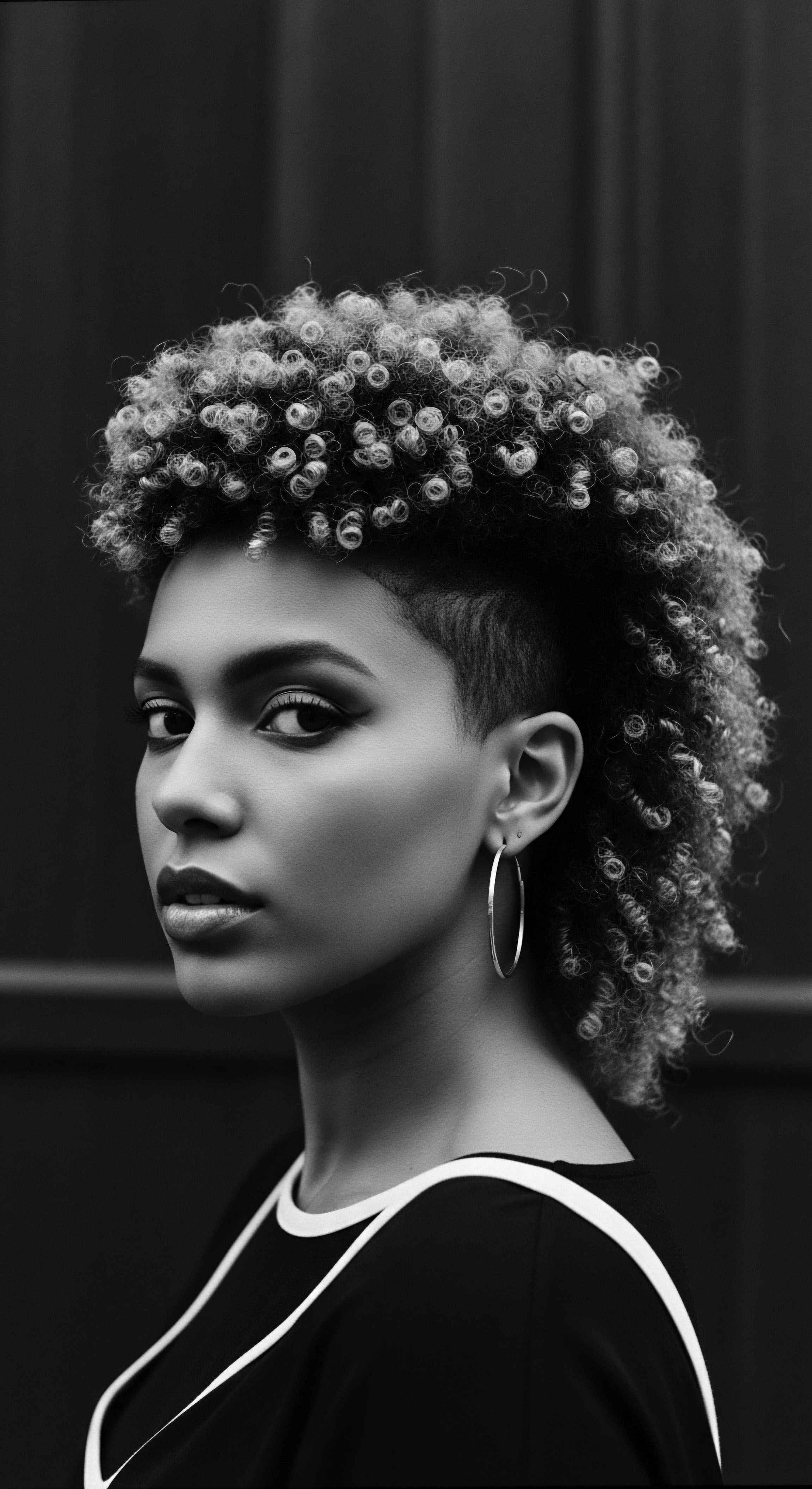
Relay
The passage of wisdom through generations creates a living archive, a relay of knowledge that continuously informs and reinforms our understanding of self and care. For textured hair, this relay is particularly vital, intertwining ancestral wisdom with the precision of contemporary science. This ongoing dialogue prompts a deeper exploration ❉ How does ancient botanical knowledge truly shape the regimen of radiance, informing holistic care and problem-solving practices rooted in heritage and ancestral insight? The answer lies in recognizing how historical practices often provided foundational solutions that modern science now precisely defines.
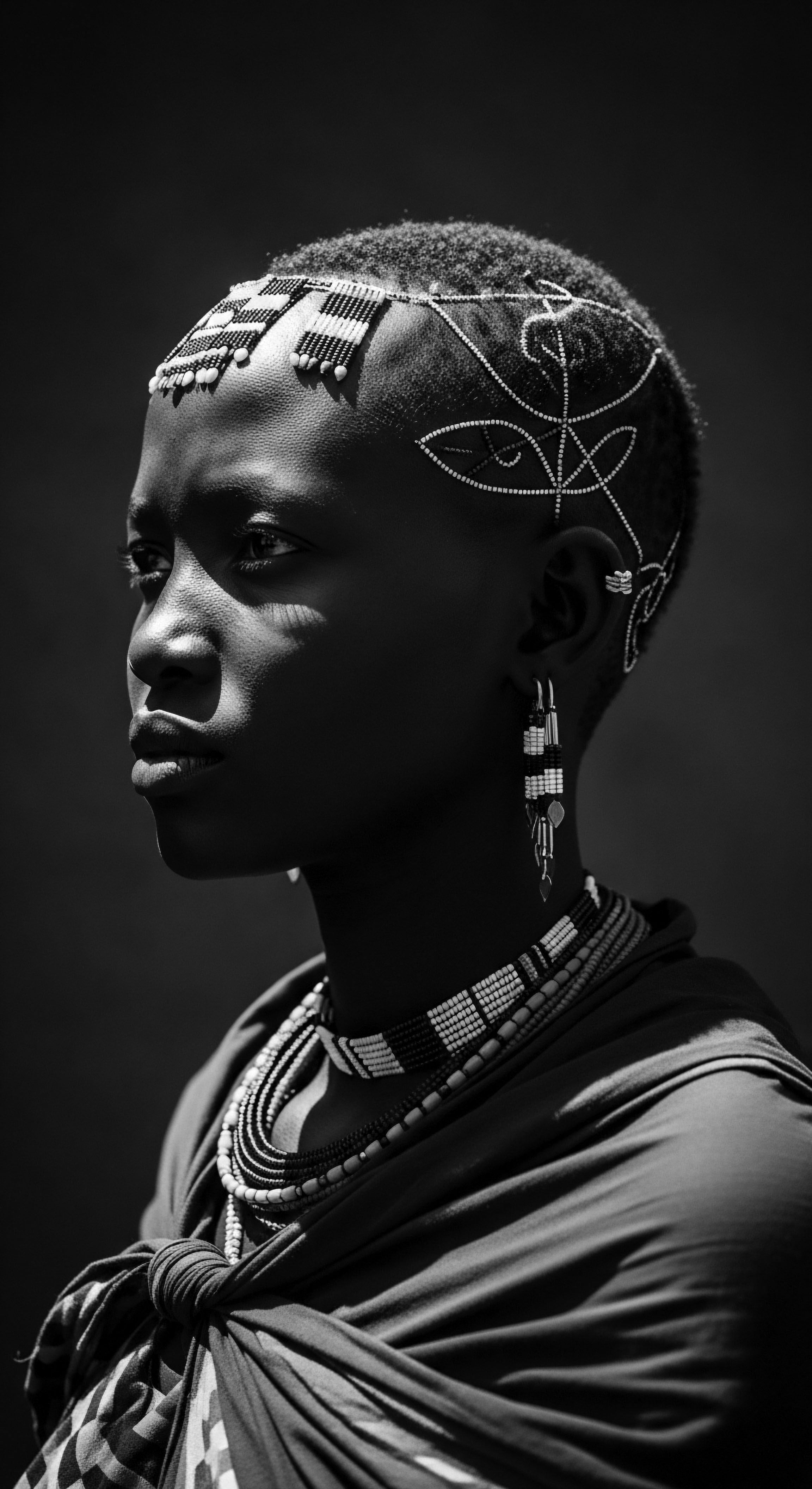
Crafting Regimens from Ancestral Blueprint
Building a personalized hair regimen for textured hair requires an understanding of its unique needs for moisture, protein, and gentle handling. This fundamental understanding is not new; it is a legacy from ancestral practices. Communities across Africa and its diaspora developed sophisticated care systems, using locally available botanicals. These regimens often involved multi-step processes, intuitively mimicking modern principles of cleansing, conditioning, and sealing.
A significant historical example illustrating this validation is the extensive traditional use of Fenugreek (Trigonella foenum-graecum) seeds in Indian Ayurvedic and various ancient Egyptian hair care practices. For millennia, communities have valued fenugreek for its purported ability to stimulate hair growth, strengthen strands, and alleviate scalp issues. (Clinikally, 2025; Kobarne et al. 2025).
This deeply rooted ancestral practice finds remarkable validation in modern textured hair science. Scientific studies now affirm that fenugreek seeds are rich in proteins and nicotinic acid, compounds that are known to strengthen hair follicles and enhance blood circulation to the scalp. (Mega Lifesciences, 2025). Moreover, research indicates that fenugreek contains active components like saponins and flavonoids, which contribute to its anti-inflammatory and antioxidant properties, creating a healthier scalp environment conducive to growth.
(Kobarne et al. 2025; Clinikally, 2025). The mucilaginous content of fenugreek seeds, traditionally relied upon for conditioning, has been scientifically shown to coat hair, lending softness and shine. (Planet Ayurveda, 2021; Kobarne et al.
2025). This exemplifies how ancient botanical knowledge, applied through consistent regimens, provided real, tangible benefits now understood and validated by scientific inquiry into its molecular mechanisms.

The Nighttime Sanctuary
The vulnerable nature of textured hair, especially during sleep, led ancestral communities to develop protective nighttime rituals. These practices were not born of convenience but of necessity, preserving the integrity of intricate styles and preventing moisture loss. The use of head coverings, often made from natural fibers, served as an early form of sleep protection.
This ancestral wisdom is directly echoed in the modern reverence for bonnets, wraps, and satin pillowcases. These tools act as a barrier against friction and absorption, preventing the hair’s natural oils and applied products from being stripped away by absorbent fabrics.
The understanding that hair requires protection even during rest is a testament to the intuitive grasp of hair fragility. While ancient cultures lacked microscopes to observe cuticular abrasion, they keenly perceived the tangible benefits of safeguarding their strands. The wisdom passed down informed the development of cultural practices that prioritized hair preservation, cementing the bonnet’s historical basis as a tool of hair health and heritage.
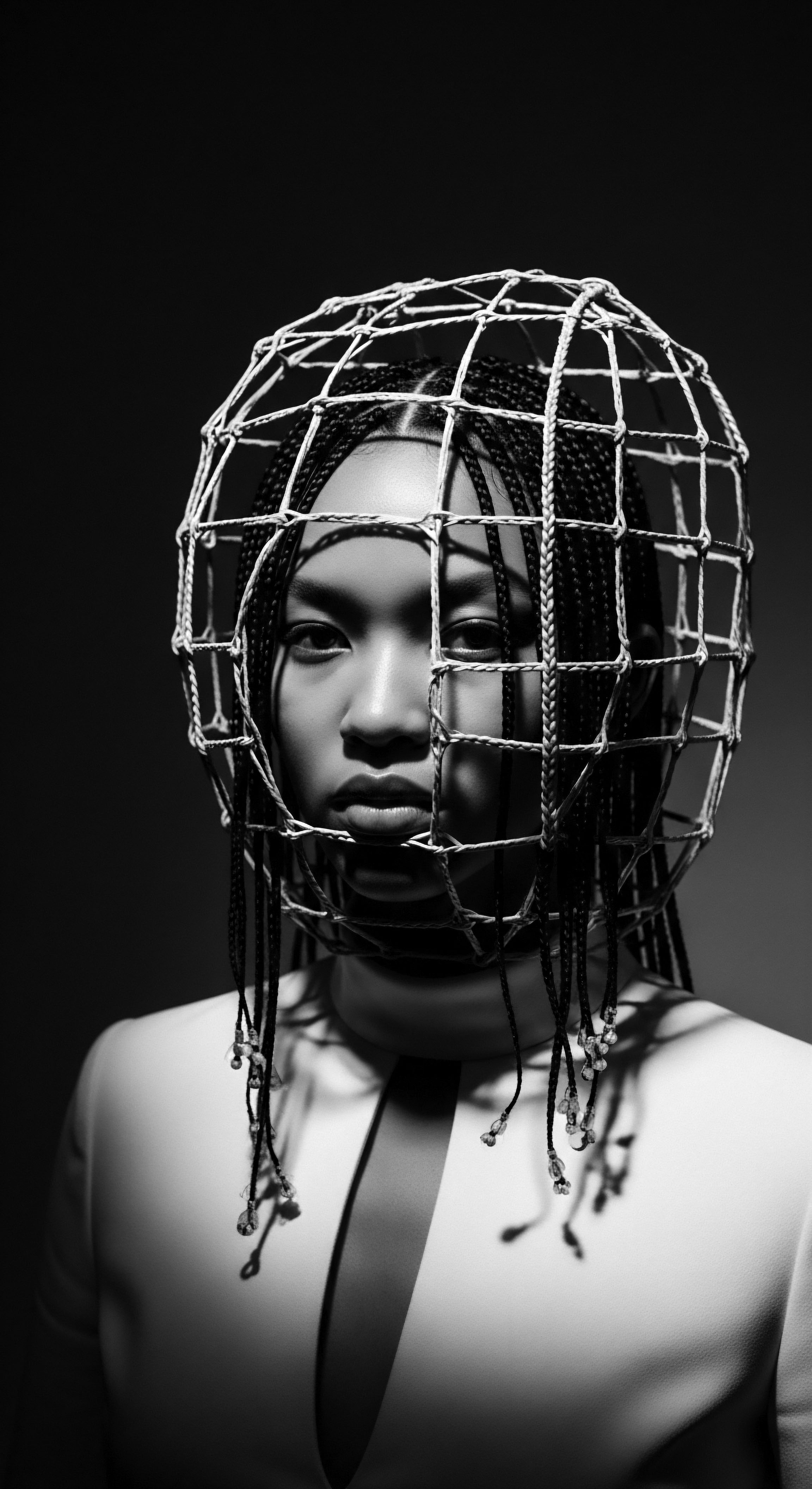
Are Ancestral Ingredients Still Relevant?
The ingredients used in ancient hair care were a direct reflection of local flora. These botanical resources were not just available; they were intimately understood for their specific properties. The deep dives into these ingredients today reveal a treasure trove of compounds with scientifically recognized benefits.
- Coconut Oil ❉ Historically used across tropical regions for its conditioning properties, modern science notes its high lauric acid content, which allows it to penetrate the hair shaft, reducing protein loss.
- Neem (Azadirachta indica) ❉ Revered in Ayurvedic tradition for its medicinal properties, it is used for scalp health due to its antifungal and antibacterial compounds.
- Amla (Indian Gooseberry – Phyllanthus emblica) ❉ Another Ayurvedic staple, it is rich in Vitamin C and antioxidants, supporting scalp circulation and hair strength.
The interplay of these botanicals in ancestral formulations often created synergistic effects, where the combined impact was greater than the sum of individual components. Modern cosmetic science often attempts to replicate these synergies, studying the complex interactions between natural compounds to create effective products.
Ancestral hair care rituals, including nighttime protection and ingredient selection, demonstrate an intuitive scientific understanding that modern research now precisely quantifies.
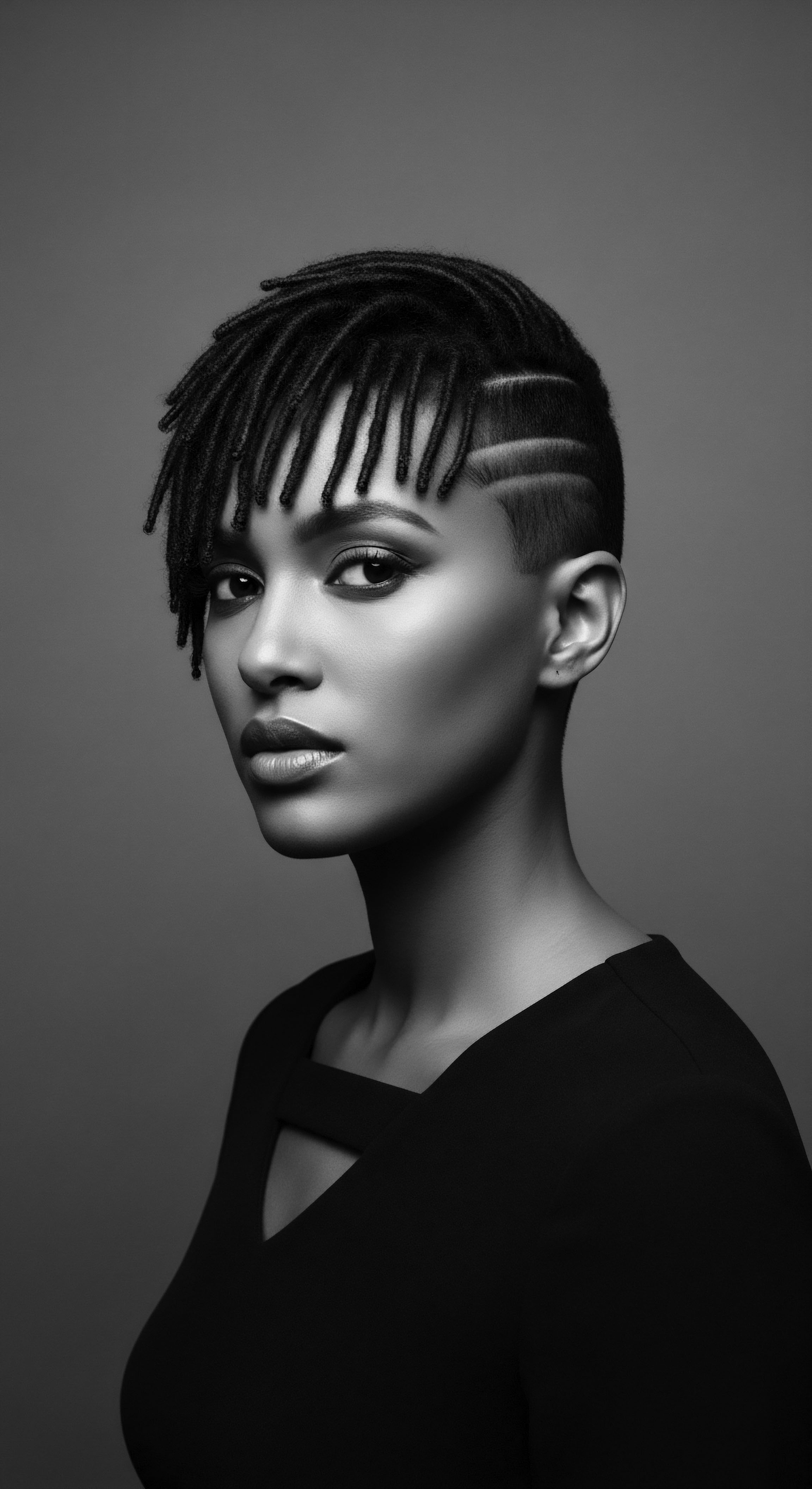
Problem Solving with a Historical Lens
Addressing textured hair problems like dryness, breakage, and scalp irritation has always been a core aspect of hair care. Ancestral practices often provided solutions rooted in observation and plant efficacy. For example, traditional African black soap, made from plantain skins, cocoa pods, and shea tree bark, has been used for gentle cleansing and scalp soothing. Its efficacy in clearing scalp build-up and managing irritation is recognized today for its natural antimicrobial and anti-inflammatory properties derived from its components.
| Textured Hair Challenge Dryness and Brittleness |
| Ancestral Botanical Solution Regular application of rich oils like Shea Butter, Baobab Oil, or Castor Oil. |
| Modern Scientific Explanation These oils are rich in fatty acids and vitamins, providing a lipid barrier that seals moisture into the hair shaft and cortex, reducing water loss and increasing elasticity. |
| Textured Hair Challenge Scalp Irritation/Dandruff |
| Ancestral Botanical Solution Herbal rinses or pastes from plants like Aloe Vera, Fenugreek, or Hibiscus. |
| Modern Scientific Explanation These botanicals contain anti-inflammatory, antimicrobial, and proteolytic enzymes that soothe scalp inflammation, combat fungal overgrowth, and remove dead skin cells. |
| Textured Hair Challenge The enduring effectiveness of ancestral solutions for common textured hair issues stems from their natural alignment with scientific principles of hair and scalp biology. |
Holistic wellness philosophies, integral to many ancestral cultures, viewed hair health as an indicator of overall bodily balance. This perspective encouraged dietary practices, stress reduction techniques, and community support as part of a comprehensive approach to well-being. Modern hair science, increasingly recognizing the influence of internal factors like nutrition and stress on hair vitality, truly validates this ancient holistic view. The legacy of ancient botanical knowledge is therefore not merely a historical curiosity; it is a foundational pillar supporting the edifice of modern textured hair science.

Reflection
The journey through ancestral botanical wisdom and its resonance with modern textured hair science reveals a profound truth ❉ knowledge, when deeply connected to the rhythms of the earth and the stories of our people, possesses an enduring power. The ‘Soul of a Strand’ ethos finds its living expression in this very connection, affirming that our hair is a vibrant archive, holding centuries of practices, innovations, and spirit. The question of whether ancient botanical knowledge can validate modern textured hair science finds its answer not in a simple ‘yes’ or ‘no,’ but in a compelling affirmation of continuity and shared understanding.
From the careful observations of our foremothers who understood the inherent thirst of a coil, to the scientific instruments that now map protein structures and moisture pathways, a harmonious chorus sings. The very botanicals that sustained hair health for millennia—the shea, the fenugreek, the hibiscus, the aloe—stand as testament to an intuitive science, a deep knowing that sprang from intimate relationship with the land. These ingredients, once chosen by hand and prepared with ancestral reverence, now reveal their secrets under laboratory lenses, their compounds confirming the efficacy of practices born not of data, but of generations of lived experience.
Textured hair heritage is not a static relic of the past; it is a dynamic, breathing entity. It is the wisdom held in every twist, every braid, every oil application. It is the understanding that hair is a cultural marker, a shield of identity, a canvas for expression, and a living connection to those who came before.
As we continue to seek balance and wellness in our hair care practices, we draw strength from this enduring legacy. The validation we seek from modern science is often already present in the timeless efficacy of ancestral rituals, inviting us to honor the past as we shape a radiant future for every strand.

References
- Clinikally. (2025). Fenugreek Benefits For Hair ❉ Everything You Need to Know.
- Clinikally. (2023). Hibiscus for Hair Growth ❉ Benefits, Uses and More.
- Kobarne, H. P. Zaware, S. S. Tagad, S. V. Kobarne, Y. R. & Kasar, J. S. (2025). A Review on Fenugreek Seeds. International Journal of Advanced Research in Science, Communication and Technology (IJARSCT), 5(1).
- Laila Che Rose, Nur Nadiah Syahirah Rusdi, Asnuzilawati Asari, Mohd Effendy Abd Wahid, & Hamdan Suhaimi. (2020). Potential hair growth of crude extract from Hibiscus rosa-sinensis Linn. Archives of Pharmacy Practice, 11(2).
- Mega Lifesciences. (2025). Fenugreek Benefits For Hair ❉ Everything You Need to Know.
- MDPI. (2024). Cosmetopoeia of African Plants in Hair Treatment and Care ❉ Topical Nutrition and the Antidiabetic Connection?
- MyHair.ai. (2025). Shea Moisture Hair Loss ❉ Myths, Facts & 2025 Insights.
- NCCIH. (n.d.). Aloe Vera ❉ Usefulness and Safety.
- Ningen Skin Sciences Pvt. Ltd. (2024). Benefits Of Hibiscus For Hair Growth.
- Planet Ayurveda. (2021). What Is Chebe Powder & How Effective is it As A Hair Mask?
- PureWow. (2021). What Is Chebe Powder, and What Can It Do for Your Hair?
- ResearchGate. (2024). Medicinal plants used in cosmetics for skin and hair care.
- ResearchGate. (2024). A Review Of Indigenous Therapies For Hair And Scalp Disorders In Nigeria.
- Silkbiotic. (n.d.). Shea butter ❉ properties and benefits.
- StyleCraze. (2024). Does Chebe Powder Really Promote Hair Growth?
- Times of India. (2024). Myth or reality ❉ Does rubbing fresh aloe vera gel regrow hair?
- UCLA Department of Geography. (n.d.). AFRICAN TRADITIONAL PLANT KNOWLEDGE IN THE CIRCUM-CARIBBEAN REGION.
- Verywell Health. (2025). Can Fenugreek Be Used for Hair Growth?
- Wimpole Clinic. (2024). Aloe Vera For Hair Health ❉ Benefits, Uses and Risks.
- YouTube. (2025). I Tried a 4,000-Year-Old Egyptian Hair Mask—Here’s What Happened.
